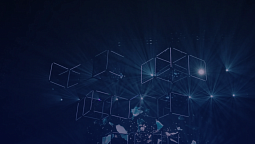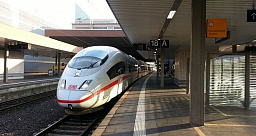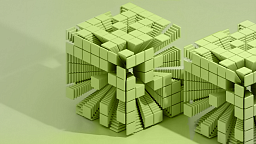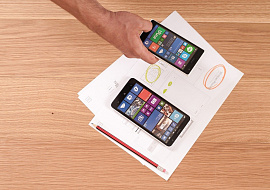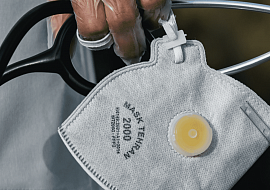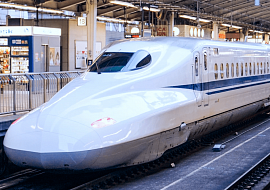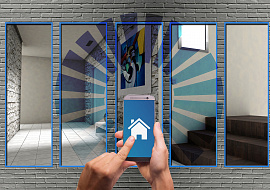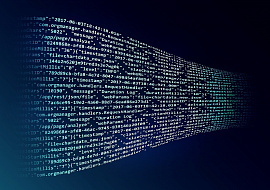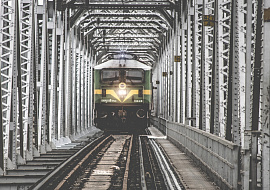This tandem becomes more popular since it oversteps time restrictions of the Cloud. By implementing AI models on the Edge, you can still deploy real-time monitoring, advanced automation, or machine vision QA applications, and they are expected to be faster and more reliable than if deployed in the Cloud.
IoT Technology Solutions: Building a Robust System for Real-Time Operations
We have finally entered an era when no one will criticize the enormous scale of your plans and the technological means necessary to implement them. This is largely due to the evolution of IoT ecosystems, which provide a flexible platform for combining and amplifying various technologies, including AI, Big Data, embedded systems, 5G, and much more. This is how we got smart factories, telemedicine, and unmanned vehicles – the most complex and multifunctional real-time systems that are also highly lucrative. Perhaps the most significant strategic achievement of IoT is calculability and predictability. We can look into the future to adjust the present in the best possible way.
This article is not only about grandiose cases that drive the world’s IoT market. It is about practical and affordable local applications of IoT to automate any operations in real-time without delays and harm to performance. It's about IoT technology solutions that help us combine and get the best from automated systems and IoT to manage events of any complexity in real-time from anywhere. Move on to learn how to apply these values to your business case.
Real-Time for IoT: Crucial IoT Technology Solutions
In the IoT ecosystem, the real-time application collects raw data from the environment or physical objects via sensors, processes it, and makes a decision based on the newly collected data. IoT-based automation, or smart automation, involves operation in the connected environment, implementation of Internet protocols, transparency of the whole process, and the ability to control the process remotely. To set up such an environment, the entire IoT ecosystem or its critical segments have to represent a real-time system. The basis of such systems is hardware with sufficient functionality and power, RTOS as the core component, and functionally compatible applications. Traditional real-time devices involve sensors, PLCs, and embedded systems that are used for control of the entire production. IoT technological solutions offer expanded use cases by advancing compatibility, transparency, as well as connection to the Cloud.
The Adoption of RTOS for IoT Technology Solutions
As in most real-time systems, the behavior of the IoT hardware is subject to RTOS (Real-Time Operating System). Leveraging RTOS for IoT-enabled devices gives full control over the multithreading and therefore enables deterministic real-time behavior. This provides rapidity, seamless operation, and optimized power consumption, which are vital for IoT technology solutions. The common RTOS-related issues are associated with a lack of resources, which contributes to poor security and monitoring opportunities. Accordingly, these breakdowns should be offset within the entire system.
The Internet of Things can serve two types of real-time systems differing in their speed requirements. The first involves “soft” RTOS where delays are not critical for the application to run. For example:
-
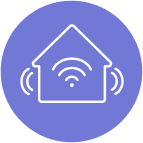 Smart home
Smart home -
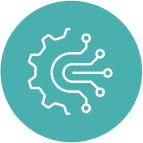 Production automation solutions
Production automation solutions -
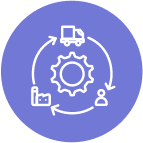 Supply chain management
Supply chain management -
 Telecommunications
Telecommunications -
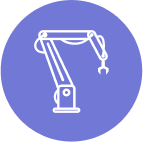 Industrial robotics
Industrial robotics
The second type involves hard RTOS to eliminate any latency since it’s critical. Here we can name the following IoT-enabled systems:
-
 Safety-critical systems
Safety-critical systems -
 Medical equipment
Medical equipment -
 ADAS
ADAS -
 Streaming services
Streaming services -
 VR/AR for real-time maintenance
VR/AR for real-time maintenance
Some RTOS have already proven themselves as reliable IoT technology solutions. Let us mention the two most widespread of them.
-
FreeRTOS works best for highly specialized apps that do not need high computing power or extended functionality. A great example is a system of distributed sensors. It is a light and reliable option for continuous monitoring and control of average functions, but it suffers from poor flexibility and a lack of functions.
-
Azure IoT ThreadX is, on the contrary, rich in functionality. It also allows for building highly compatible, flexible, and performative apps, which is indispensable for processing-intensive IoT use cases. It is recommended for more complicated and energy-intensive IoT solutions requiring specific features. The challenge the engineers face starting to work with this system is its complexity in studying and limited support for open-source software.
Both systems can work in hard real-time and are easily integrated into the Cloud.
Real-Time IoT Architecture. Reliable IoT Technology Solutions
There is a range of IoT architectures applicable for real-time systems, so it has to be configured considering the specifics of the business, data, environment, as well as goals set. For instance, it can be a simplified 3-layer architecture, containing only the perception, network, and application layers. Otherwise, service-oriented architecture, or middleware-based architecture, can also be smoothly integrated here. In most cases, to manage common challenges associated with a real-time system, we need to set up data collection, transfer, processing, and action based on the data collected.
When designing an IoT-enabled system with a real-time component, we should ensure its reconfigurability, scalability, low power consumption, distributed functionality, and modular nature, compatibility, flexibility, and customizable performance. The architecture should be built based on the following priorities:
-
Time-critical decision making
-
Uninterrupted communication
-
Minimized latency
The larger the system is expected to be, the more challenging it can be to set up all connections and seamless data transfer, not to mention AI introduction for real-time apps. Thus, more attention should be paid to edge infrastructure containing significant computing power. To visualize the real-time process, perform advanced analytics, and management of the system, the system should be connected to the Cloud. Let’s go on to sort it all out.
Need Help?
Real-time Data Collection
The basis of the functioning of any intelligent ecosystem is the raw data. Data is typically collected by an RTOS-based system, be it a separate object detection sensor, a wearable smart ring, or a complex embedded system for quality control. Collected in analog format, it must be converted to digital for any further operations, and, for a real-time application, it has to be done as quickly as possible. Such devices usually require low power, but if you build an expanded, difficult-to-maintain system with 1000+ sensors, examine cutting-edge technologies to help power consumption be further reduced.
The “infrastructure of things” is built based on how the data will be used in the future. For example, for automation purposes, we can tolerate inaccurate data if we implement an appropriate data verification mechanism, but redundant data is not welcome in this case. For analytics goals, on the contrary, it is crucial to ensure the volume and quality of the supplied data. Taking into account the environmental conditions, we should decide on network topology and data transfer protocols. For example, Wi-Fi is one of the common and convenient IoT technology solutions for home automation while Zigbee is the most reliable solution for industrial monitoring and management. For difficult-to-reach areas, it’s worth considering mesh networks.
If data is going to be used for multiple purposes, you should provide flexibility and modularity for a target system. For instance, to build a real-time IIoT system based on AI, this AI model has to be trained on custom enterprise data first. Therefore, data collection modules should serve analytical goals, and then regroup to execute AI-based IoT automation.
IoT Technology Solutions for Data Processing. Edge Computing
Perhaps the greatest attention in the real-time IoT ecosystem should be given to edge computing. Data processing, routing, caching, buffering, multiple protocols translation, implementation of data encryption, and intelligent reactions occur at this stage of the data lifecycle. Edge devices can combine artificial intelligence, significant computing power, and real-time components to offload the central server and create a decentralized network.
At this stage, the raw data is turned into information. Since the Cloud does not support real-time operations and also increases the delay when passing data through it, we recommend utilizing Edge as a reliable and profitable basis for creating infrastructure for large-scale data processing in real-time. Data filtering and compression provide efficient communication in environments with increased streaming speeds and limited internal system capacity. This is especially relevant for large IoT systems where multiple gateways serve substantial volumes of data and provide compute and edge functions.
Here are some innovative applications of edge computing to streamline IoT-based real-time operations.

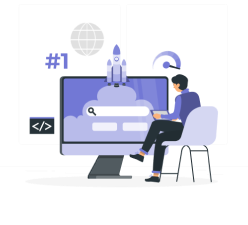
This technology can’t provide the desired 1-millisecond response yet, but communications via this protocol are already 16 times faster than via LTE. This speed allows for the deployment of multiple applications, such as the management of drones and robots in real-time, unmanned vehicles, and remote surgery. If we leverage all their benefits, such as reduced power consumption, high computing power, and incredible latency, we gain a new generation of real-time IoT technology solutions promoting a significant business boost.

This combination unlocks enhanced flexibility in the distribution of operation loads over the network. That is, it allows for optimizing scalability efforts and increasing sustainability to protect against failures. Advanced cloud components provide for better consistency, controllability, and transparency of the system, which is indispensable when data volume is abundant.
Thus, we set up advanced event-driven reactions and opportunities for full control of the process.
Optimal Cloud Usage: Which Operations Devote to Cloud?
In a traditional cloud-based PaaS, real-time computing is impossible. In addition, the Cloud increases latency and introduces security risks. Therefore, being the cornerstone of connectivity and accessibility of the whole system, it can be leveraged to indirectly serve the goals of the real-time IoT ecosystem and complement it. Below, we describe several applications for the Cloud within real-time IoT.
Firstly, this is the creation of AI models. As we mentioned above, it is already possible and even can be necessary to deploy AI on edge servers. However, training of the model can be performed only in the Cloud, since the necessary computing power is available there. To build such a model, you need high-quality data in abundant quantities collected directly from the fields. A cloud-based server is also suitable to perform automation operations, but with no such great speed as the Edge can offer.
Secondly, we can utilize it as a monitoring and control center for the entire IoT ecosystem. Decentralized edge infrastructure is well suited for real-time operations, but the Cloud, at the same time, can serve the transparency of the entire system. By visualizing incoming data, you can be notified of failures and respond to them promptly, observe analytics on performance or upcoming failures, and generate reports. Such an IoT platform provides a comprehensive view of the business and its points for improvement without collecting useless data.
IoT Technology Solutions for Real-Time App: Closing Thoughts
Although deploying a full-fledged IoT ecosystem in real time requires overcoming a lot of limitations, it is possible to leverage this and sometimes is highly recommended. The difficulties increase as the system becomes more complex and response time requirements become more stringent. Common recommendations from PSA are the following:
-
Separate the data to be used for automation and analytics purposes. This allows the unloading of computing loads by sending the data through various channels, eliminating latency.
-
Implementation of RTOS designed for IoT purposes, like ThreadX, allows you to build multifunctional and highly reliable systems while maintaining real-time operations.
-
Extension of the IoT architecture to the Edge, including implementation of AI-based apps in edge devices, is one more way to reduce latency, that is, increase the speed of the operations.
-
Decentralization of the system also allows the unloading of computing nodes. For complex, and extensive systems, the Cloud can serve as a dashboard, leaving instant decision-making behind the Edge.

